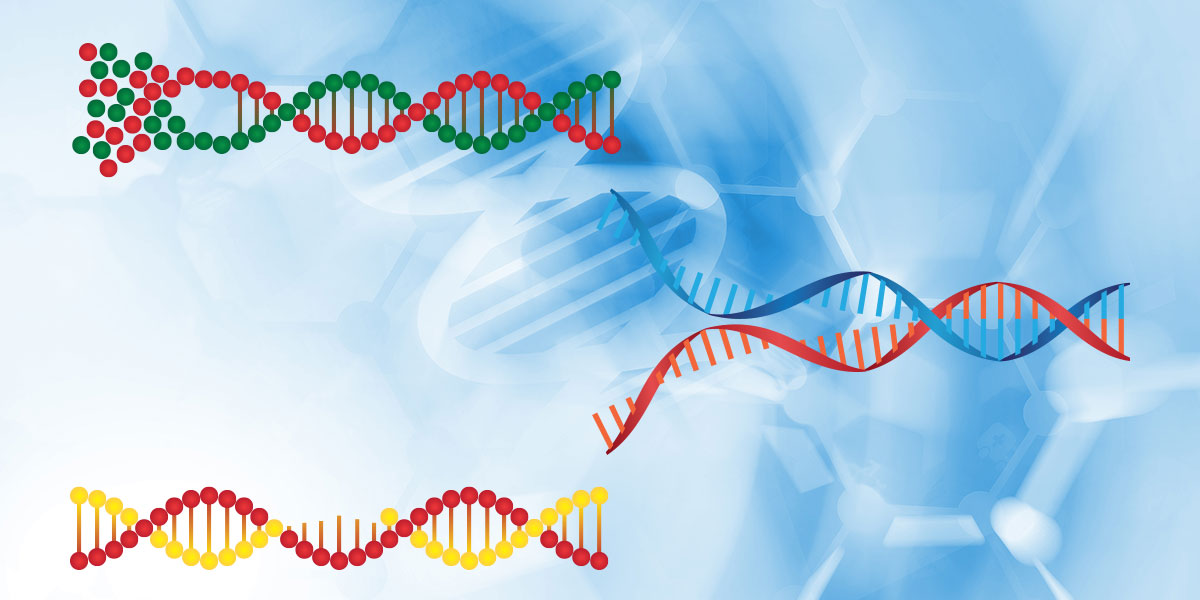
Caution required for using CRISPR in potential gene therapies – and food plants. Report by Claire Robinson
Scientists at the Wellcome Sanger Institute have discovered that CRISPR/Cas9 gene editing can cause greater genetic damage in cells than was previously thought. These results create safety implications for gene therapies using CRISPR/Cas9 in the future as the unexpected damage could lead to dangerous changes in some cells. Potential consequences could include triggering cancer.
Reported on 16 July 2018 in the journal Nature Biotechnology, the study also revealed that standard tests for detecting DNA changes miss finding this genetic damage, and that caution and specific testing will be required for any potential gene therapies.
As usual we see far more honesty about the off-target effects of CRISPR from genetic engineers in the field of medical research than we see from the plant genetic engineers. However, the technique as used in plants is the same, as are the mechanisms of DNA repair. These off-target effects in food plants could have possible knock-on effects on food safety, including unexpected toxicity and allergenicity.
CRISPR/Cas9 is one of the newest genome editing tools. It can alter sections of DNA in cells by cutting at specific points and introducing changes at that location. Already extensively used in scientific research, CRISPR/Cas9 has also been seen as a promising way to create potential genome editing treatments for diseases such as HIV, cancer or sickle cell disease. Such therapeutics could inactivate a disease-causing gene, or correct a genetic mutation. However, any potential treatments would have to prove that they were safe.
Previous research had not shown many unforeseen mutations from CRISPR/Cas9 in the DNA at the genome editing target site. To investigate this further the researchers carried out a full systematic study in both mouse and human cells and discovered that CRISPR/Cas9 frequently caused extensive mutations, but at a greater distance from the target site.
The researchers found many of the cells had large genetic rearrangements such as DNA deletions and insertions. These could lead to important genes being switched on or off, which could have major implications for CRISPR/Cas9 use in therapies. In addition, some of these changes were too far away from the target site to be seen with standard genotyping methods.
Prof Allan Bradley, corresponding author on the study from the Wellcome Sanger Institute, said: "This is the first systematic assessment of unexpected events resulting from CRISPR/Cas9 editing in therapeutically relevant cells, and we found that changes in the DNA have been seriously underestimated before now. It is important that anyone thinking of using this technology for gene therapy proceeds with caution, and looks very carefully to check for possible harmful effects."
Michael Kosicki, the first author from the Wellcome Sanger Institute, said: "My initial experiment used CRISPR/Cas9 as a tool to study gene activity, however it became clear that something unexpected was happening. Once we realised the extent of the genetic rearrangements we studied it systematically, looking at different genes and different therapeutically relevant cell lines, and showed that the CRISPR/Cas9 effects held true."
The work has implications for how CRISPR/Cas9 is used therapeutically and is likely to re-spark researchers' interest in finding alternatives to the standard CRISPR/Cas9 method for gene editing.
Prof Maria Jasin, an independent researcher from Memorial Slone Kettering Cancer Centre, New York, who was not involved in the study said: "This study is the first to assess the repertoire of genomic damage arising at a CRISPR/Cas9 cleavage site. While it is not known if genomic sites in other cell lines will be affected in the same way, this study shows that further research and specific testing is needed before CRISPR/Cas9 is used clinically."
Food safety implications
Commenting on the findings, London-based molecular biologist Dr Michael Antoniou said, "The main point to bear in mind about CRISPR is that all events after the CRISPR has cut the DNA occur independently of the CRISPR and are due to the cell's innate DNA repair machinery. Thus it doesn't matter how much you tweak the CRISPR to make it more 'specific' – you'll be faced with the same spectrum of downstream problems that are inherent to the non-homologous end joining (NHEJ) DNA repair system.
"These findings also do not bode well for the other genome editing tools (TALENs, ZFNs), as presumably the same things will happen after they too have produced a double strand DNA break and the NHEJ repair pathway kicks in.
"In addition, these findings suggest that we need to re-visit/re-evaluate the outcomes from NHEJ DNA repair in general. Do the outcomes reported in this latest study with CRISPR-generated double strand breaks also occur when the DNA is cut by other means, e.g. radiation or mutagenic chemicals? Or do they occur only when double strand breaks are brought about by editing tools?"
Dr Antoniou pointed out that some of our food plants have been produced through the older methods of radiation- or chemical-induced mutagenesis and if similar genetic damage to that seen when using CRISPR also occurs with the older methods, this could have implications for the food safety of those plants.
The new paper:
Repair of double-strand breaks induced by CRISPR–Cas9 leads to large deletions and complex rearrangements
Michael Kosicki, Kärt Tomberg & Allan Bradley
Nature Biotechnology, 16 July 2018
https://www.nature.com/articles/nbt.4192